All about anthracnose
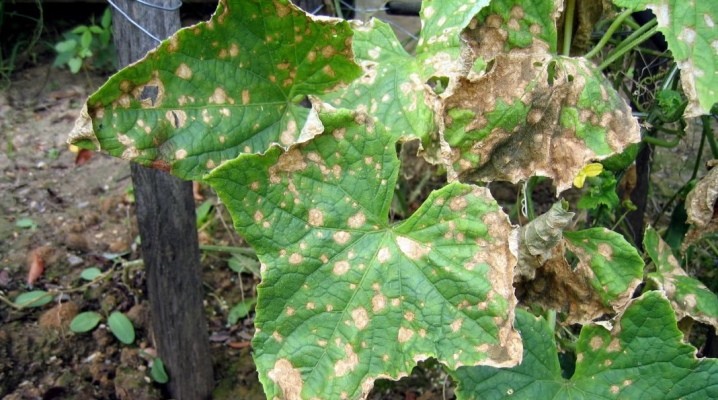
Plants can suffer from various diseases. So, anthracnose can cause serious damage to garden plantings. This is a common ailment, but you can and should fight it. You should learn everything about anthracnose, as well as figure out which crops are especially susceptible to it.
What it is?
Before considering all the symptoms of anthracnose, it makes sense to answer the main question, what is it. Anthracnose is a serious plant disease. It is caused by ascomycete fungi. Many common cultures are susceptible to this disease. It is difficult not to notice the manifestations of anthracnose, since the plants that suffer from it become covered with spots, ulcers and are characterized by a noticeable darkening.
Today, there are some plant species that are completely immune to the disease in question.
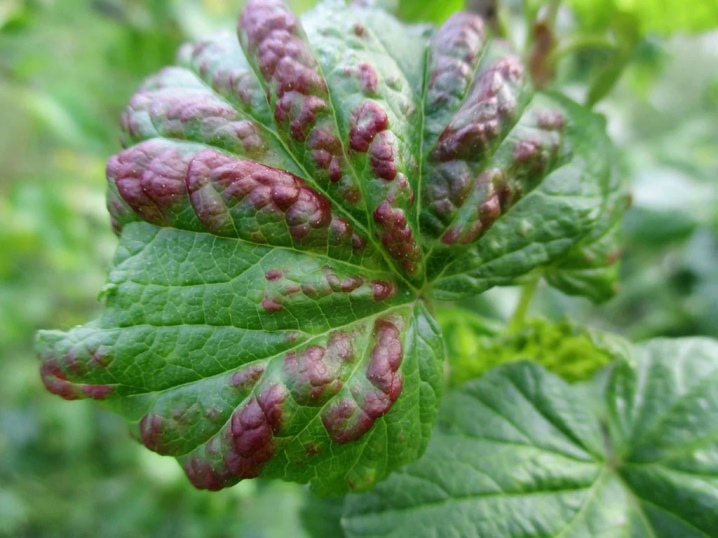
Signs
Anthracnose, like many other plant diseases, is notable for several signs. It is advisable to notice them as soon as possible in order to timely begin treatment of the affected cultures. Let's understand the main symptoms of the disease.
When crops are planted outdoors, they can suffer from fungal infections. They are provoked by 3 types of fungi:
- Gloeosporium;
- Colletotrichum;
- Kabatiella.
In comfortable conditions, the spores mature. For this, high humidity must be maintained, coupled with an air temperature of +20 to + 30 ° C. As a rule, 3 days are enough for the whole process of maturation for fungi.
If rainy weather persists, fungi can spread at a very high rate. Because of this, all plants can be damaged within a short period of time. For example, characteristic points appear on vine shoots, which are located in the form of longitudinal stripes. Gradually, they begin to merge, forming rather deep and clearly visible wounds.
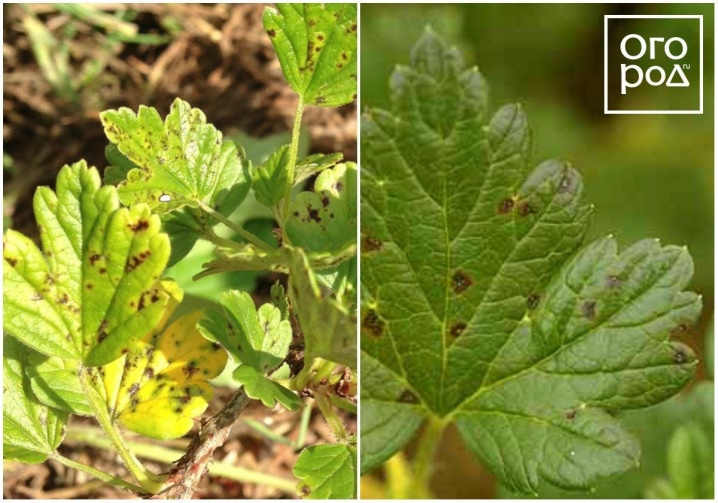
If the weather is dry, then the dangerous fungus will still not die from this.
Its spores are transformed into conidia. These are accumulations of spores closed with a thick protective shell, absolutely unadapted to any mobility. Immediately after the rain, conidia begin to open up, and then start up full-fledged spores. The latter, with water droplets, can fall on the surrounding plantings and directly into the soil. For this reason after dry weather, the next outbreak of serious illness often occurs. If the planted bushes still have young tissues, then this attack can be quite aggressive.
First of all, shoots, leaf plates and fruits of plants planted on the site are affected by anthracnose. If we consider the symptoms on the example of raspberries, then its foliage is usually covered with small rounded specks of a gray-brown hue. These spots have a dark halo. If the lesion is more serious, then these elements on the plants will certainly begin to merge. Subsequently, the foliage undergoes necrosis, and then completely falls off.
On the shoots or overgrowth of raspberries with anthracnose, small but deep ulcers are formed. When they merge, they then transform into clearly visible dents. The tops of the crimson stems dry out along with the flower shoots. The fruits acquire characteristic spots and then mummify.
Diseased shoots are completely unstable to low temperatures, which is why they often freeze out.
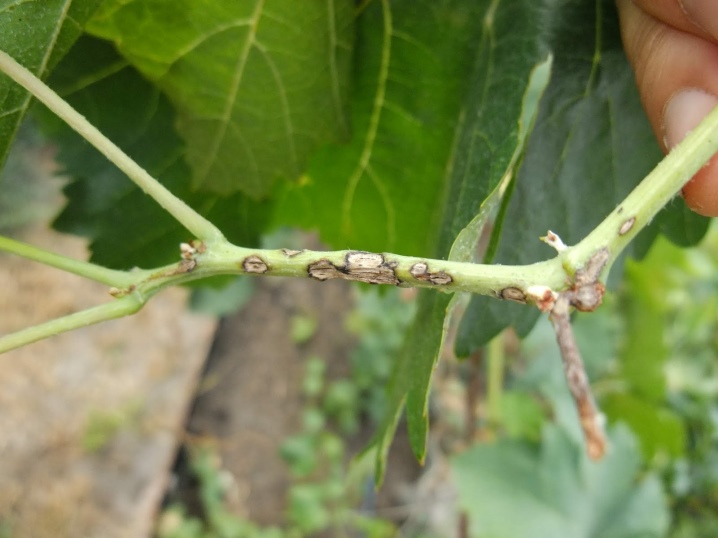
The symptomatology of the disease in question may vary depending on which culture it affected. So, with a tomato disease, all the corresponding signs most often appear on the fruits, root collar and roots. Scaly brownish specks form on the roots. Fruits (mature) are most often covered with large light brown blotches, which after a while begin to darken the flesh to a black color.
If cucumbers get sick with anthracnose, then depressed spots will necessarily form on their leaves, stems and fruits. They are round or elongated. The color of the spots is most often yellow or brown. After a while, the process of their inflammation begins, due to which the spots transform into ulcers. Then the problem spreads to the green plants, sinking 3-4 mm into the plant tissue, which is why it can no longer develop normally.
If the indicated symptoms are noticed immediately, then the plants can be saved. You can't delay with this. That's why it is so important to keep under control the condition of the planted crops.
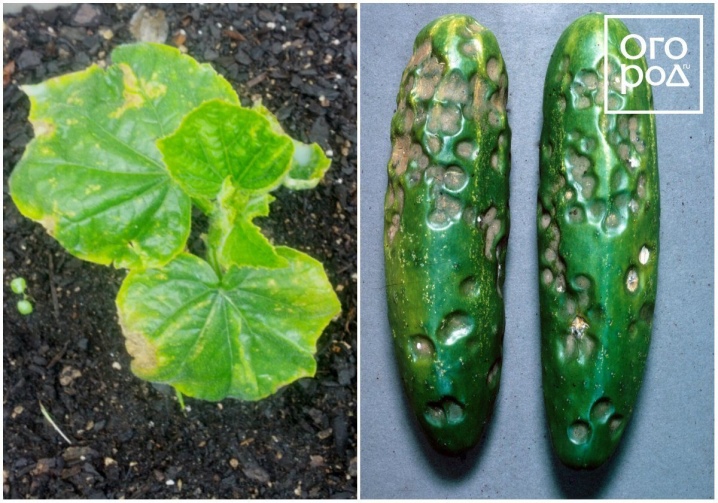
Which crops are susceptible to the disease?
Anthracnose is a disease that can attack a wide variety of cultures. Let's find out in more detail which plants are especially susceptible to this ailment.
- Raspberries... Experienced gardeners recommend planting on their plots only those varieties that are characterized by resistance to this serious ailment.
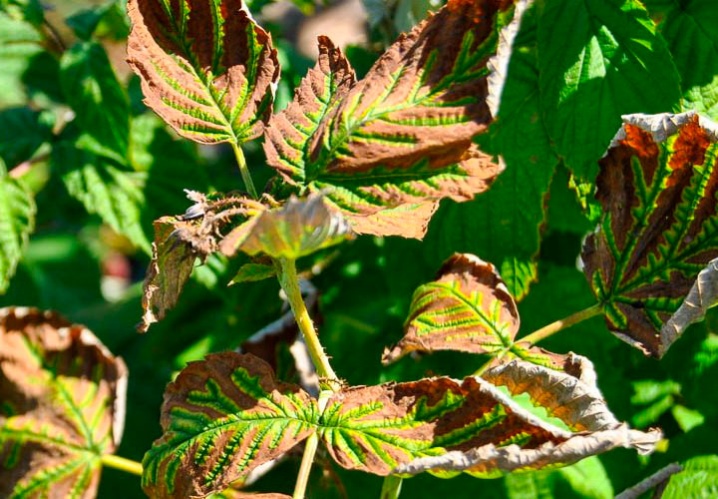
- Grape... This culture is less likely to be affected by anthracnose, but this disease can cause very serious damage to it. The most resistant to the disease are the sauvignon, rkatsiteli, traminer, and riesling varieties.
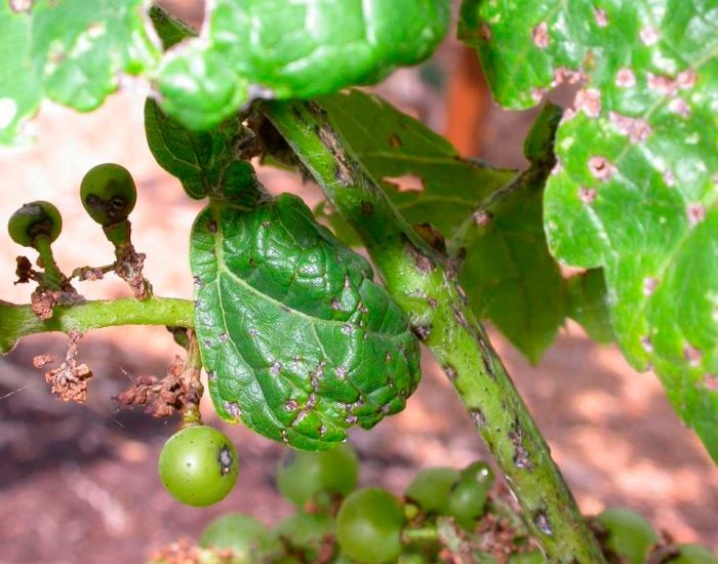
- Gooseberry... Gooseberries planted in a summer cottage can also get sick with anthracnose. On this culture, the disease shows itself in the same way as on currants. At the same time, small brown spots are formed from the bottom of the leaf plates, which after a certain time become larger and larger. Then they merge altogether. Soon the foliage weakens and falls off.
Also, depressed spots are formed on the stems and petioles, which then turn into clearly visible wounds.

- Tomatoes... In most cases, already mature tomato bushes suffer from anthracnose. As a rule, the disease makes itself felt towards the end of summer or towards the beginning of autumn. If the defeat turned out to be massive, then more than half of the entire crop can be lost.

- Potato... Anthracnose is mainly manifested on tubers and potato shoots. Most often, this culture is covered with characteristic brown spots. The shoots soon become shorter and more angular. If you adhere to all the rules and regulations of crop rotation, you will be able to prevent the disease.
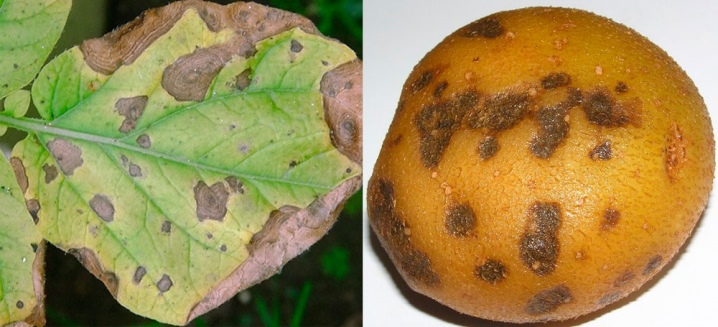
- Zucchini... Anthracnose is quite capable of attacking courgettes and peppers. Absolutely all aboveground parts of these crops can be completely damaged by dangerous fungi. On the tops of the leaf plates, against the background of what is happening, characteristic brown marks are formed, and the fruits and shoots acquire squeezed zones, complemented by a pinkish bloom. The roots of the bush, which have already been damaged by anthracnose, in most cases die.
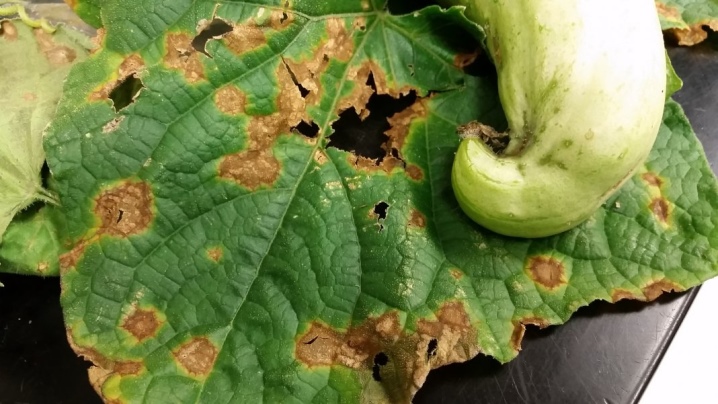
- Watermelon... The disease often affects watermelons and melons. The disease affects all aboveground components of plants. The shoots of pumpkin crops receive the greatest damage. Because of this, they become very fragile and weak. Sick fetuses stop further normal development, their noticeable deformation begins. At the same time, the taste of the fruit is lost due to a decrease in the sugar content.
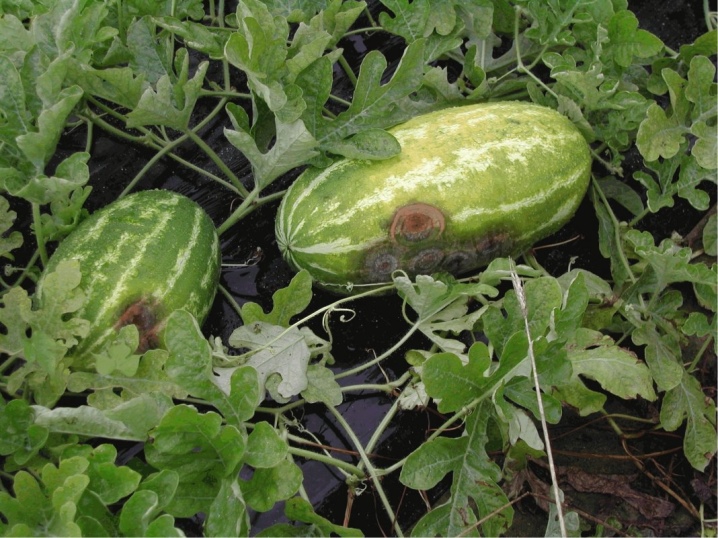
- Cherry... Often, anthracnose also affects garden stone fruit trees. Towards the middle of the summer season, dried spots can be seen on the infected fruits, gradually increasing, and then covering the entire berry.Due to the disease, the gardener risks losing up to 50% of the total crop.
For this reason, it is recommended that you always monitor the health of your cherry trees.
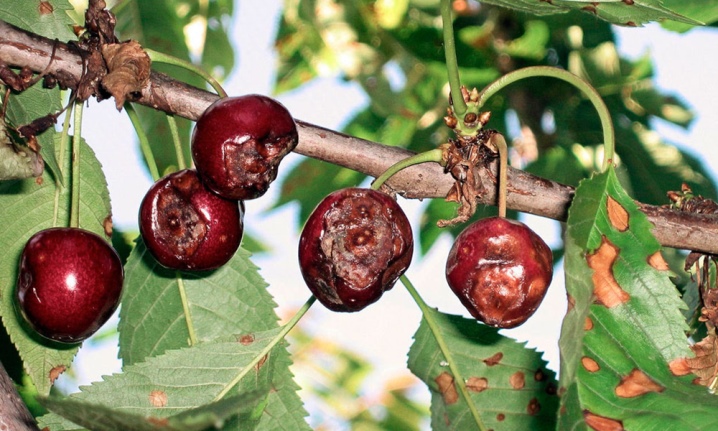
- Soy... Not immune to attacks from dangerous fungi and soybeans. Pathogens can easily infect this culture at almost any stage of its development and growth. Anthracnose develops especially strongly and quickly in warm and humid years. As in the case of the above plants, soybeans are also covered with characteristic brownish specks.
They appear on the root collar, on the stem. Then the disease spreads to the petioles.
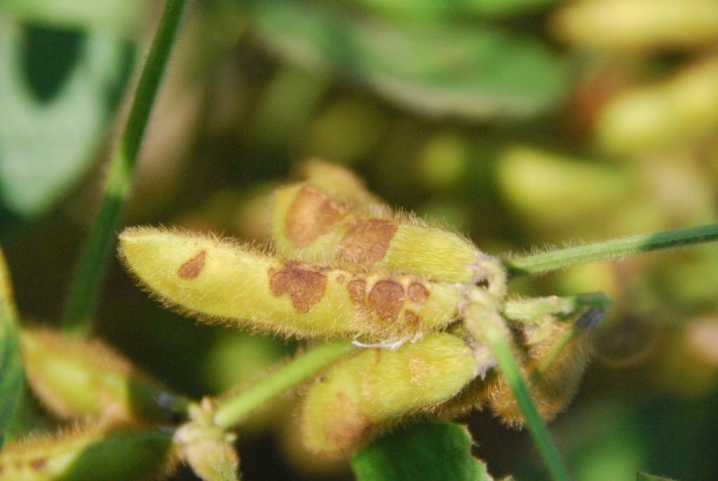
- Apple trees... If you grow an apple tree on your site, you should also closely monitor its condition. Even such plantings can be attacked by pathogenic fungi. As a rule, it is young apple shoots that are attacked by anthracnose, but sometimes large branches can be affected.
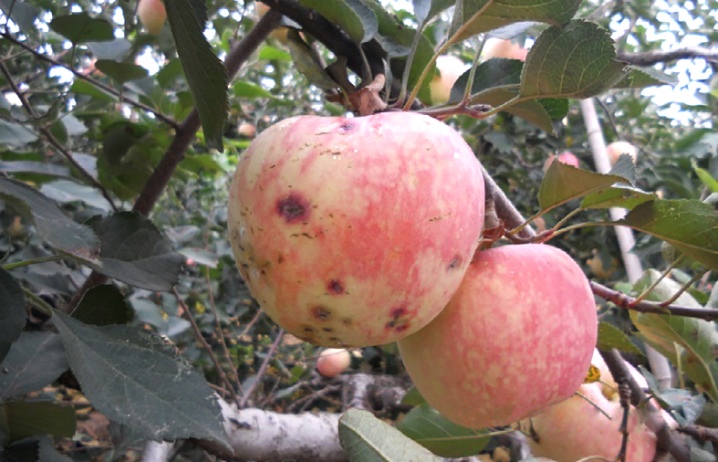
- Gloxinia... Gloxinia is a flower that is particularly susceptible to anthracnose. The leaf blades of flowers acquire brown blotches, which then steadily spread on the shoots and trunk. As a result of this process, the plant rots and then collapses.
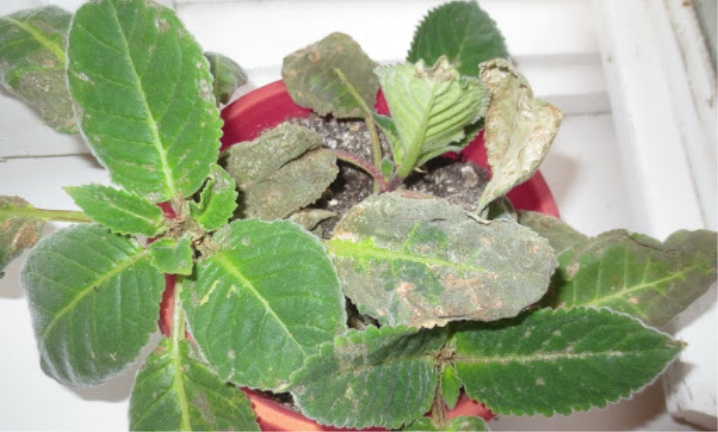
Control methods
With anthracnose, as with any other existing fungal plant diseases, it is necessary to fight timely and correct... There are various ways to save damaged crops. Some users turn to specific agricultural technicians, while others refer to the use of special chemical compositions. We will learn more about both the first and the second method of dealing with anthracnose.
Agrotechnics
Such measures act as the primary stage in the treatment of damaged plants. You can safely turn to the appropriate agricultural technicians when, for example, we are talking about a vineyard of not very large sizes, when it is possible to properly process each position. Agrotechnical measures make it possible to save plantings from dangerous fungal infections. Further, it will be possible to use less toxic agents and drugs.
To stop a dangerous disease, you will need to take some measures. Let's consider what actions we are talking about using the example of grapes.
- The vineyard should be weeded first. If there are weeds, especially tall ones, then the moisture level also increases because of this. This creates ideal conditions for the development of the fungus. After removing all the weeds, the vineyard needs to be thoroughly ventilated. In such an environment, damp stagnation will not occur.
- It will be necessary to reduce the abundance of watering during especially intensive growth of shoots. The upper soil layer may dry out slightly, but no more than 1 cm deep.
- The diseased areas of the plants will have to be removed. It is pointless to feel sorry for them, because they will die anyway, but they will also have time to let the fungus spread further. Damaged shoots should be carefully trimmed, picking up at least 4 cm of uninfected parts. Diseased brushes and leaves will need to be cut off completely.
- A prerequisite is the addition of potash-phosphorus fertilizers to the soil. They will significantly increase the level of grape resistance to common diseases, including anthracnose.
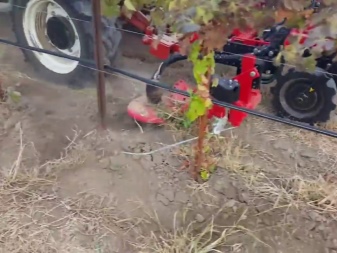
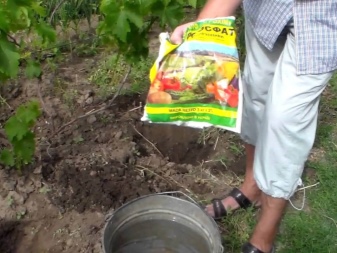
Chemicals
For effective treatment of diseased plants, it is advisable to use various drugs. In addition to fungicidal agents, recently, special biological compounds have become frequently used, which demonstrate very high efficiency in the fight against fungi. Most of them are safe not only for plants, but also for the health of the summer resident. If treatment measures are taken to save the grapes, then the following drugs will be the best:
- "Gaupsin";
- Mikosan;
- Plantriz.
The listed products do not change either the composition or the taste of the crop. They activate the growth of shoots, due to which the plant can recover from damage as quickly as possible.Processing is allowed to be carried out once every 2 weeks. Initial treatments are carried out precisely with contact-type preparations, which are based on copper.
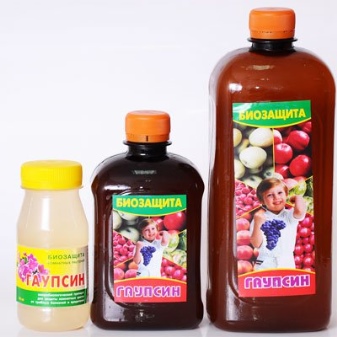
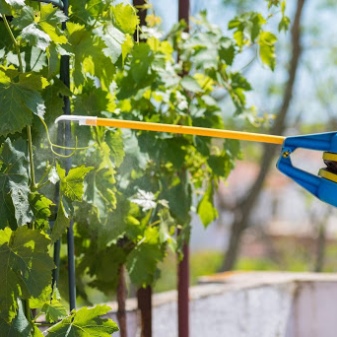
Fungicides also show high efficiency. They are very often used to effectively treat diseased crops. Systemic fungicides are the most potent when it comes to ridding crops of anthracnose. Consider a list of popular remedies that can be used in the treatment of grapes from a fungal disease:
- Bordeaux mixture;
- "Cuproxat":
- DNOC;
- "Speed";
- Fitosporin M.
If the damage to the grapes remains not too strong, then you can use 1% solution of Bordeaux liquid. She is allowed to process shoots, the length of which is at least 10 cm.After a couple of weeks, it will be necessary to spray the grapes with the appropriate solution again, but with a concentration reduced by 2 times. The specified solution can be used to process plantings after prolonged rainfall.
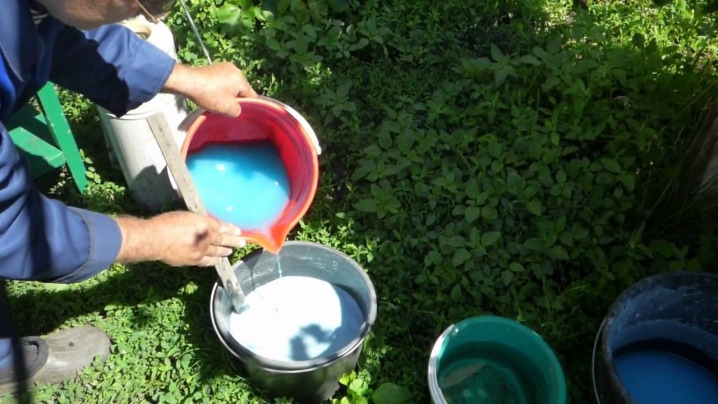
If the plants went to winter, being already sick, then with the onset of spring, before the first buds have time to bloom, the treatment will need to be carried out with the most powerful drug DNOC. They are also allowed to carry out the processing of the vineyards after the cutting of the vines is completed in the autumn season.
The use of suitable chemicals allows anthracnose to be controlled both outdoors and in the greenhouse. In order to achieve the desired results, it is very important to select the correct application periods for the specific mixtures. For example, this may be the time of fruiting or ripening. The correct preparation of special chemical compositions aimed at combating fungi is also important.
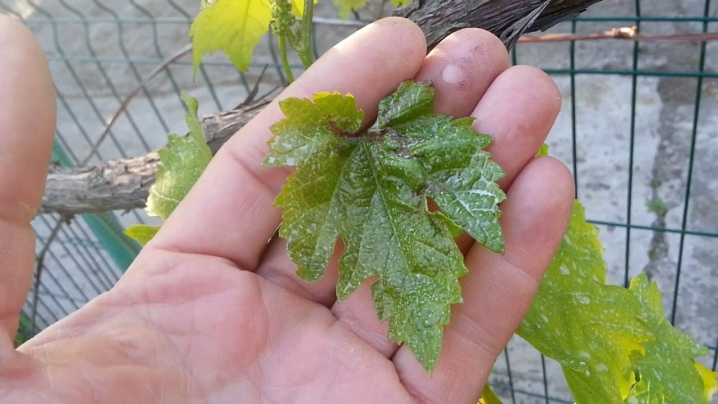
Preventive remedies
In most cases, a timely detected anthracnose turns out to be a curable disease, gardeners have every chance to save the planted plants and the crop. But it is much easier to initially turn to the use of prophylactic agents than then to treat an already existing serious fungal disease. We will understand the most effective preventive measures aimed at protecting grown crops from anthracnose.
- It is very important to prevent the appearance and maintenance of high humidity levels. To this end, you will need to properly mulch the soil after watering the plants to the very root. Thinning of the crown is also required in order to air it. We must not forget about timely weeding.
- Absolutely every tool you need clean and handle thoroughly after any formation of a planted bush and before moving on to the next.
- Recommended to resort to preventive spraying of plants, annual spring treatments with special protective preparations. This must be done three times during the season.
- Experienced gardeners strongly recommend cultivate only those plant varieties that are fairly resistant to fungal disease.
- Absolutely all planted bushes must be carefully inspected regularly. This is necessary in order to detect the first signs of their damage by anthracnose in time.
- When growing vineyards, you need to resort to prophylactic treatments with protective drugs immediately after the past hail. This process plays an important role, since the areas most vulnerable to fungal attacks will appear in the areas damaged by hail.
- When growing grapes it is very important to adhere to the correct autumn harvests. During the specified period of time, it is required to remove absolutely all fallen leaves. It is required to thoroughly clean the soil so that in the spring season conditions are not created that are most suitable for the development of fungal diseases. It is also recommended to sprinkle the soil with wood ash.
For the prevention of anthracnose, see the video.













The comment was sent successfully.